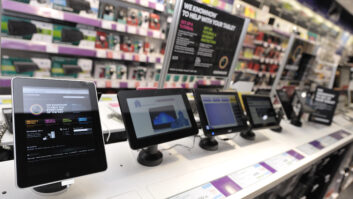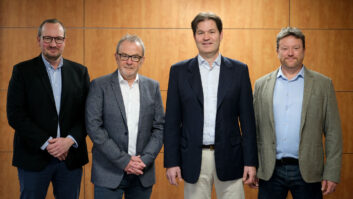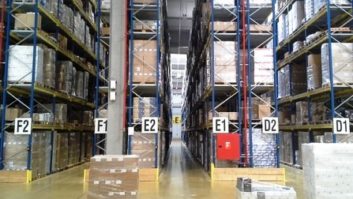Benidorm, Spain – Â In a preview to the annual IFA show this September organizers outlined the state of world CE markets.
Dr. Christian Goeke, COO for Messe Berlin, which organizes
IFA together with the German industry group gfu (Gesellschaft Unterhaltungs
und Kommunikationselektronik), hosted this past weekend at a pre-IFA media
event attended by nearly 400 technology reporters from 47 countries, at the
Barceló Asia Gardens Hotel & Thai Spa, here.
While the weather and presentations painted a sunny outlook
for the global CE business, it is clear the European market is becoming less
predominant globally.
And the March 11 earthquake and tsunami in northern Japan
and the subsequent damage to the country’s power grid and economy could cast a
cloud over critical component availability, supply-chain and product
manufacturing, according to a presentation made by DisplaySearch at the event.
According the market researcher Gfk, Europe – which includes
10 Western European and five Eastern European countries, not including Russia –
grabbed 29 percent of Euro 632 billion ($912 billion) of the world’s electronics
revenue in 2010, while the U.S. represented 21 percent.
However, Europe’s percentage of the overall global CE market
has been steadily shrinking. In 2008, Europe held 35 percent of the global CE
market, but is expected to capture merely 28 percent of the Euro 668 billion ($964
billion) CE market in 2011, according to Gfk.
The world’s fastest growing market according to Gfk is South
America, where CE revenues jumped 39 percent last year and is expected to grow
another 27 percent this year to reach 12 percent of global CE revenues.
Another growing market is the Middle East and Africa, which,
thanks to its rapidly expanding youthful and educated middle class, grew 19
percent last year. Depending on the spread of political upheavals, the region
is expected to expand another 15 percent this year to six percent of global CE
revenues.
Conversely, the Japanese CE market is expected to drop 18
percent this year, more a result of its slower-to-recover economy than the
earthquake and tsunami and their aftermath, according to Gfk.
According to Paul Gray, DisplaySearch’s director of TV
electronics and Europe TV research, there is a significant ongoing shortage of electrical power in eastern
Japan, specifically in the Tohoku and Kanto – including Tokyo – areas, which “is
expected to continue for a long time.” While there are two power grids in
Japan, they operate on different frequencies – 60Hz in the west, 50Hz in the
eastern areas affected by the disaster – with limited capacity to interconnect
them.
Gray noted that major Tokyo electronics retailers have
turned off their display HDTVs to conserve power, and rolling blackouts in
eastern Japan have disrupted transport of some materials and production.
For instance, three chemicals key to the manufacturing of
LCD displays – ITO (indium tin oxide), used in substrate coating, ACF (Anisotropic
conductive film), used to electrically connect panels, and NF3 (nitrogen trifluoride), a cleaning
fluid, already suffering from supply shortages – have been affected. Factories
for each of these chemicals were either damaged or are located close to the
dangerous Fukushima nuclear power plant.
However, Gray reported that flat panels are largely manufactured
further south, outside the affected area, with one exception: Panasonic’s fabrication
plant in Mobara, which produces 26- and 37-inch panels. The company’s Himeji fabrication
facility, however, is unaffected.
As for IFA, this year scheduled for Sept. 2-7, in Berlin,
the show belies Europe’s shrinking dominance as the leading CE market and
parallels the growth of the developing non-U.S./European CE and appliances
market.
Last year’s IFA was the largest ever, with 1.45 million
square feet of exhibit space, 1,423 exhibitors, 235,000 attendees including
125,000 from the trade and 29,000 international visitors. IFA will be adding
two new temporary buildings for this year’s show, and is building a new
two-story exhibit hall scheduled to be ready for the 2014 event.
IFA’s expansion also reflects the growing technological
sophistication of home appliances and their growing importance in the consumer
electronics market.
Only a handful of products displayed in the hotel, however,
are due for the U.S. market, including Android tablets from Hanspree, an
Airplay-compatible iPod dock/speaker array from Philips, and a $3,000 coffee
maker from WMF
Still familiar brands to the U.S. market showed their
foreign wares to the international media. Among them were overseas operations
of Ford, IBM, Panasonic, Bosch, Samsung, Sharp and Toshiba.













